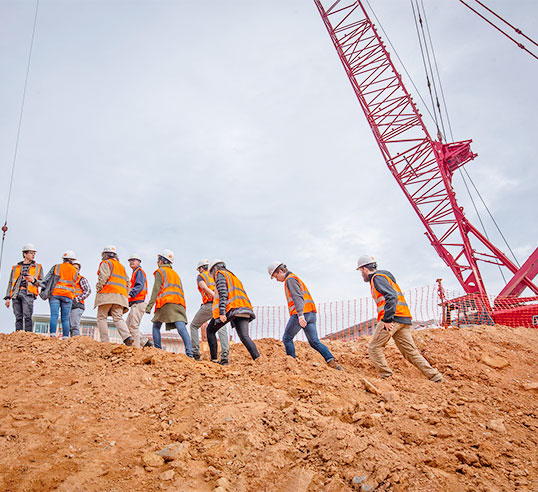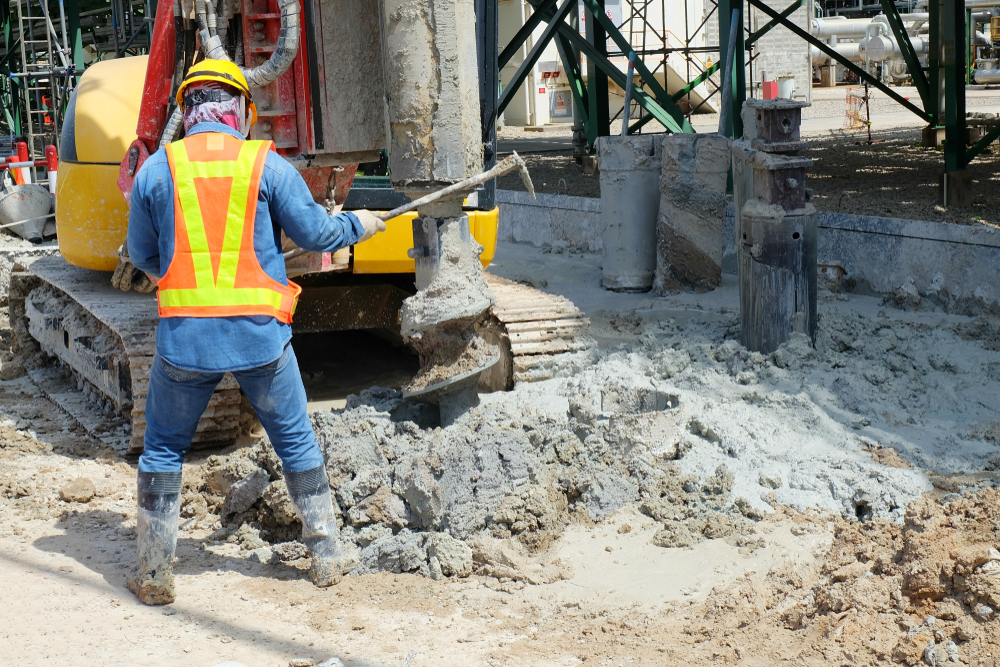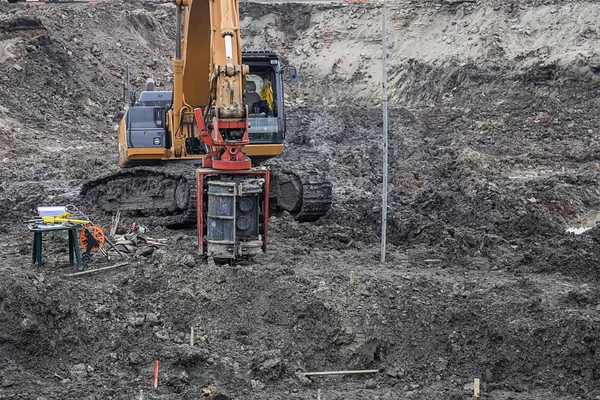A Complete Overview to Becoming a Successful Geotech Engineer
A Complete Overview to Becoming a Successful Geotech Engineer
Blog Article
A Comprehensive Introduction of the Key Responsibilities of Geotechnical Engineers in Website Characterization and Ground Renovation Methods for Design Solutions
Geotechnical designers are integral to the effective implementation of engineering projects, charged with the critical obligations of website characterization and the application of ground enhancement techniques. Their work entails a thorough analysis of subsurface conditions, using various testing methods to determine dirt and rock residential or commercial properties. This foundational expertise not only notifies style decisions yet also reduces possible risks connected with ground instability. As we check out the diverse roles of these specialists, it becomes obvious exactly how their experience forms the safety and efficiency of engineering remedies. What details techniques and analyses attract attention in this vital technique?
Duty of Geotechnical Designers
Geotechnical designers play a pivotal role in the design and building and construction of facilities by analyzing the behavior of soil and rock underneath the surface area - geotech engineer. Their obligations encompass assessing subsurface conditions to notify design choices that make certain structural security and safety. By conducting detailed analyses of soil properties, consisting of shear permeability, compressibility, and stamina, geotechnical designers supply important information that influences the selection of appropriate construction products and methods
In enhancement to analyzing dirt auto mechanics, geotechnical engineers are entrusted with determining possible threats such as landslides, sinkholes, and ground settlements. Their experience aids mitigate threats connected with these geotechnical sensations, therefore safeguarding both the atmosphere and public security. They also team up carefully with various other design disciplines, ensuring that geotechnical considerations are incorporated into general project layout.
Furthermore, geotechnical designers take part in the evaluation of existing frameworks, giving referrals for retrofitting and repairs when required. Their thorough understanding of soil-structure interaction is necessary for the advancement of lasting framework remedies. In general, the function of geotechnical engineers is integral to the successful understanding of construction projects, guaranteeing they are safe, sturdy, and certified with regulatory standards.

Website Characterization Processes
Effective website characterization procedures are crucial for understanding the subsurface conditions that influence task design and execution. Geotechnical engineers employ an organized strategy to gather, examine, and interpret information concerning dirt, rock, and groundwater characteristics. This process starts with a complete review of existing literary works and historical website data, offering insights into previous site problems and possible challenges.

Information evaluation follows fieldwork, where designers utilize geostatistical techniques to translate searchings for and develop geological models. This modeling help in determining potential geohazards, such as landslides or liquefaction, which are important for danger analysis. Consequently, the results inform design suggestions, guaranteeing that design services are both efficient and secure. Via thorough website characterization, geotechnical designers prepared for successful project implementation, decreasing unexpected complications and enhancing source appropriation.
Dirt and Rock Testing Methods
While recognizing subsurface problems is important, the his comment is here selection of appropriate soil and rock testing approaches is similarly vital for precise analysis and layout. Geotechnical designers use a range of screening methods to assess the mechanical and physical buildings of soil and rock materials.
Research laboratory examinations, such as Atterberg limits, grain dimension analysis, and unconfined compressive stamina examinations, give important data on dirt behavior under various moisture Resources problems and packing situations. These tests assist determine dirt classification and forecast settlement or shear stamina characteristics crucial for foundation style.
In-situ screening approaches, including Criterion Infiltration Examinations (SPT), Cone Penetration Tests (CPT), and pressure meter tests, permit designers to gather information straight from the ground. These approaches use useful understandings right into the soil's thickness, consistency, and stratification without the requirement for extensive sampling.
Rock screening generally involves core tasting and lab analysis to assess properties like uniaxial compressive toughness and rock top quality classification (RQD) With each other, these soil and rock screening techniques allow geotechnical engineers to make educated choices relating to site-specific challenges, guaranteeing the safety and security of engineering options.
Ground Enhancement Strategies
Ground enhancement techniques are necessary for improving the engineering buildings of soil, thus boosting its load-bearing capability and reducing settlement. These techniques are critical in resolving difficulties offered by weak or troublesome soils, which can considerably influence the stability and durability of structures.
Numerous ground renovation techniques are employed, including compaction, grouting, and soil stablizing. Grouting, on the various other hand, includes injecting a liquid material into the ground to load voids and enhance dirt communication.
Dirt stablizing encompasses a range of techniques, from chemical additives to mechanical treatments, intended at boosting the dirt's resistance to disintegration and deformation. Methods such as lime stablizing or concrete blending alter the properties of the soil at a bit level, improving its general performance.
Importance of Geotechnical Assessments
Geotechnical evaluations play a critical duty in the planning and design of design jobs, as they provide important info regarding the subsurface problems. Comprehending soil buildings, rock developments, groundwater levels, and possible geohazards is vital for ensuring the security and security of structures. These analyses enable designers to make informed choices pertaining to site choice, design specifications, and building and construction approaches.
The value of geotechnical analyses extends beyond initial job stages; they contribute in browse around here threat administration and expense efficiency. By identifying prospective issues early, such as dirt negotiation, incline instability, or too much groundwater, engineers can devise proper mitigation strategies, reducing the likelihood of architectural failings and pricey hold-ups. Moreover, these assessments sustain compliance with regulative demands and enhance the sustainability of design practices.

Final Thought
In conclusion, geotechnical engineers are important to guaranteeing the safety and security and stability of design jobs through detailed website characterization and ground improvement strategies. geo tech engineering. Their systematic strategy to evaluating subsurface conditions, integrated with their suggestions for effective ground modification, substantially improves soil residential properties and load-bearing ability. The know-how of geotechnical designers not just assists in informed task planning but likewise ensures conformity with policies and cultivates effective communication amongst stakeholders, ultimately contributing to successful engineering outcomes
Geotechnical designers play a crucial role in the design and building of framework by evaluating the habits of soil and rock beneath the surface area. By carrying out comprehensive analyses of soil residential or commercial properties, including shear compressibility, toughness, and permeability, geotechnical engineers provide essential information that influences the option of proper building products and methods.
In enhancement to analyzing soil mechanics, geotechnical engineers are tasked with recognizing potential dangers such as landslides, sinkholes, and ground negotiations. Geotechnical designers utilize a systematic method to collect, examine, and analyze information relating to dirt, rock, and groundwater characteristics. By recognizing potential problems early, such as dirt negotiation, slope instability, or extreme groundwater, designers can design suitable reduction techniques, reducing the likelihood of architectural failures and expensive delays.
Report this page